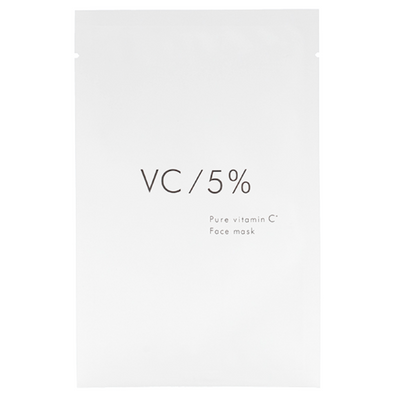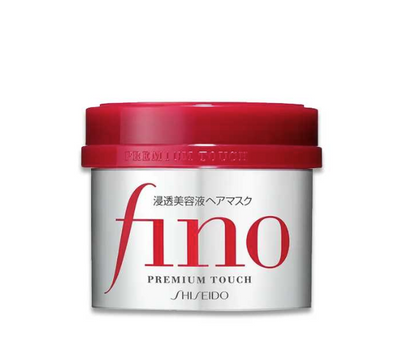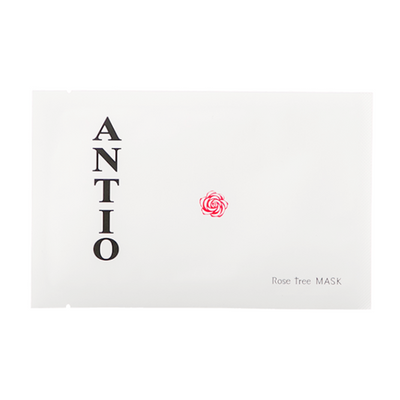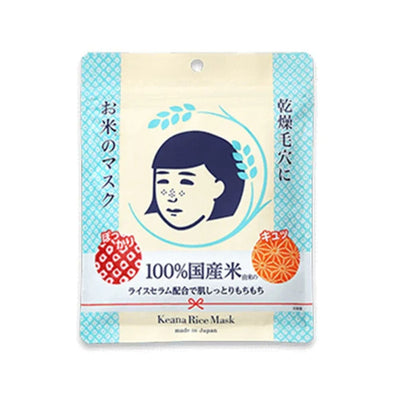The world of tea is vast and varied as each area around the world has developed their own types of tea that is steeped in history, culture—and hot water. Japan is no exception, and their green tea has been on the minds of folks all over the world thanks to Japan’s most famous tea, matcha. But that’s just the beginning, so today, we’re taking a dive into the world of Japanese green tea!
While the world of Japanese green tea is vast and full of options to explore, we’re going to stick to info related to the teas we sell on our site so that you can get some fun information before you buy! P.S. – If you want product recommendations, most of the links have recommendation sections so you can get an idea of where to start!
Anyway, let’s get started!
Uji Matcha

First up is the green tea that dominated social media and has become synonymous with Japanese green tea. Image via Instagram
We have to start with the most well-known green tea worldwide, matcha—specifically, Uji matcha.
While all green tea comes from the camelia sinensis, matcha is specifically the powdered green tea. To get this powdered mix, first the tea is grown normally, but is covered two to six weeks before harvest, which reduces photosynthesis and boosts chlorophyll. In practical terms, it makes the tea bright green in color and increases the umami flavor that Uji is famous for.
The leaves are then picked and steamed for a short time to stop oxidation. Then, all that’s left is to air-dry, destem, and devein them before they are sent to the stone mill. This stone mill is where they turn the leaves into the silky smooth powder. This process takes at least a month as it’s specially designed to grind them without burning them due to excess friction.
What you’re left with is green tea powder that, when mixed with hot water, becomes the deliciously complex green tea that is bitter, grassy, umami, and sweet all at once.
But Why Uji

Uji isn't just beautiful. It also has the perfect climate for growing matcha! Image via Unsplash
Uji has always been a tea town, with the first tea house dating back to the year 1160. However, Uji matcha came about in the 13th century when a Japanese Zen Buddhist priest, Myoan Eisai, brought back tea seeds and the method for creating tea powder from China.
Uji being in Kyoto and having just the right climate for matcha growth meant that it became an early matcha grower that could provide tea for both religious ceremonies, wealthy shogun and samurai, government elites and officials and more!
And with Zen Buddhism having such a hold there, the Japanese tea ceremony came into existence as a very Zen experience thanks to Uji!
What makes it special

While we can't guarantee whether the hype is worth it (that's up to your tastes), there are a few things that make matcha, especially from Uji, unique! Image via Unsplash
So, looking at all the hype around matcha, what actually makes this green tea special? First is the processing and care that goes into it. We already described the process before, but that is just a general flow. Each tea farm will have unique processes that give their matcha its own unique taste as well!
Second is the unofficial grades that matcha has. Although the matcha grades aren't official and are somewhat arbitrary, they're a good place to start. Generally, there are three grades— ceremonial, premium and culinary—that denote how well they mix with other things.
Ceremonial is meant to be drank straight with a relatively small amount of water. Premium (also known as daily) is perfect for drinking on its own or mixing for lattes, smoothies or other drinks. Culinary is made for just that, baking matcha sweets.
Matcha is also something that has a lot of relevance to both Japanese history and culture. Like we mentioned briefly, Uji really is significant to the history of tea in Japan! And with its long history, different tea farms and tea houses have long-standing tradition in how they grow and prepare their matcha.
For a more detailed look at the pinnacle (to some folks) of Japanese green tea, check out our blog all about Uji matcha!

Japanese tea ceremony is one of the most well-known cultural contributions that is tied to Uji's matcha! Image via Unsplash
Japan’s Matcha Shortage
While we know there are a lot of matcha lovers worldwide, we have to deliver some bad news. Japan is in the midst of a matcha shortage and while the government is trying to work with tea growers to increase production, it is going to take some time to fix it.
Overall, you can boil down the causes to three different reasons. First is the rise in popularity, partially as a healthy coffee alternative that blew up via TikTok, Instagram and other social media.
Second is the very seasonal and very slow production. Matcha is only harvested in spring, meaning that they can’t just “grow more” to meet demand that quickly. And even if they could, it would take months to get it to market with the long growth and processing.
Third is the amount and size of farms. More and more Japanese folks are leaving the countryside for urban areas and deciding not to take over their parents’ farms. This, and the fact that farming is not the most profitable career, are primary reasons why the number of farms and their size have decreased.
In fact, the number of matcha farms fell from 54,000 in 2000 to only 20,000 in 2015. And while space isn’t an issue here in Japan, it can be hard to expand a farm because of the amount of covering and shade matcha needs.

It takes a lot to go from tea leaves to the thick, delicious tea poeple sip on. Image via Freepik
Ways to navigate it
Lucky for you, it’s not all doom and gloom and you can still enjoy matcha during the shortage while also doing your part to alleviate it. First is by knowing what you need and buying to fit those needs to help reduce waste.
Second, avoid bulk purchases. While you may want to stock up, matcha’s quality does degrade over time. That means that buying too much means that those last cans won’t be as good.
Also, don’t limit yourself to Uji. You can find matcha grown in Fukuoka, Shizuoka, Kagoshima, Aichi and more, each with their own unique techniques and flavor profiles. This can help to alleviate the pressure on Uji.

Shizuoka is a huge producer of sencha, but there are also matcha growers in the prefecture that houses Mt. Fuji. Image via Instagram
Last, consider trying other Japanese green teas. Matcha is great, but Japan has plenty of other green teas. Try teas like sencha, genmaicha, hojicha and more, which you might find you like even more than matcha.
For a deeper dive into the causes (and solutions) of this unique issue, check out our deep look at the Japan matcha shortage!
Sencha

While people may think that Japan only drinks matcha, sencha is actually way more common for a daily drink in Japan! Image via Instagram
Like we mentioned, if you look at what people actually drink in Japan, sencha is the most popular version of green tea. It’s loved for its green color, freshness, and lightness as well as its slight bitterness, sweetness and earthiness.
Unlike matcha, sencha doesn’t use a covering for most or all of its growing time. That means that it has less of the grassiness and umami found in matcha. After harvest, sencha is also steamed, but in this case, the steaming actually helps to reduce the bitterness.
Makers then roll and shape the leaves and dry them. Sencha is also popular because it has plenty of variations, creating tons of unique tea-sipping experiences under one umbrella. Some of their most popular include gyokuro, first flush (shincha), fukamushi (deep-steamed), and more!
Sencha History

Did you know that sencha has its own version of tea ceremony? It's another deeply traditional event based in Zen Buddhism! Image via Instagram
Sencha also has a really interesting history. While Eisai is famous for matcha, sencha’s creation is thanks to another monk most commonly referred to as Baisao, which translates roughly to old tea seller. This monk sold tea all over Kyoto and created the method of brewing sencha.
He and his method became so popular that people tried to make it a high-class experience, but he tried his best to keep it accessible during his life. However, thanks to both his renown as a tea maker and the Zen experience surrounding tea ceremonies, sencha did develop its own version of tea ceremony!
To learn more about this tea type, its history and Baisao's influence, check out our sencha blog! And for recommendations and info about its variations, check out our sencha types blog!
Genmaicha

Don't worry. That's not popcorn. It's just popped rice, which you need to make genmaicha. Image via Freepik
Genmaicha is a unique style of Japanese green tea that is also gaining in popularity. This style combines two unlikely pairs, roasted and popped brown rice and green tea, to create a unique flavor profile and a more yellow-ish color.
Genmaicha is known for being nutty and full-bodied while having a milder, fresher and grassier profile. It also has a hint of sweetness. All of this is a result of the sugars and starches that mix into the tea from the roasted rice.
It’s also popular for its caffeine content, being a good alternative to coffee. This is because it only has 15-30 mg of caffeine per cup, making it good for an energy boost without the jitters (unless you’re sensitive to caffeine.)

As long as you're not caffeine sensitive, you can actually enjoy genmaicha relatively late without being kept up all night. Image via Freepik
Genmaicha is also an interesting tea due to its origin, which is based in Japan’s idea of reducing waste. We generally have two theories as to this tea’s origins. One revolves around Kyoto merchants wanting to use the rice crumbs left over from mochi rice cake pounding. The other is that cooks of Zen cuisine wanted to use the crispy rice that sticks at the bottom of the pot after cooking. Either way, the idea is all about reducing waste.
Want to explore the world of genmaicha a little more? Check out our genmaicha guide to learn all about it and get recommendations!
Hojicha

Hojicha is a popular tea type here in Japan and is often found on menus along with matcha. Image via Instagram
Last up on our list in our Japanese green tea guide is another popular alternative to matcha with a completely different flavor profile. Hojicha is a green tea that has been roasted over charcoal in a porcelain pot.
While the other teas in our guide have a green to yellow hue, hojicha is (generally) a more golden tea as a result of the roasting. This roasting lowers the bitterness and caffeine content and creates a toasty, nutty, sweet flavor profile with little to no bitterness.
You can also find several variations of hojicha that add a bit of variety to this roasted tea. Some varieties include the light yet sweet Nagoya hojicha, the high-quality Kyoto Kyobancha and the kukicha-based kagabou-cha. While hojicha was traditionally made with a style of tea called bancha, it is very popular to make it with sencha these days.
Part of hojicha’s appeal (on top of its flavor and sweetness) is the myriad of supposed health benefits for areas like the skin, the heart, the immune system and more.
If you want a deeper dive into this roasted green tea (including recommendations), check out our hojicha guide!

Much like matcha, hojicha is versatile and used in plenty of drinks and sweets! Image via Instagram
The world of Japanese green tea is way larger than the few categories that we have listed here. With options like gyokuro, bancha, mugicha and more, we’re more than okay with acknowledging that our list is incomplete. But as we add more green tea types to MiauMall, we’ll expand this guide so you have all the information you need to sip tea in peace!










